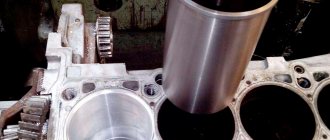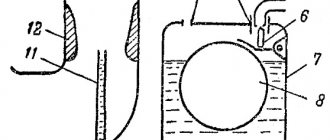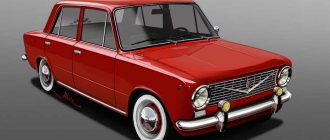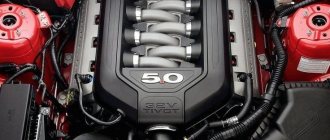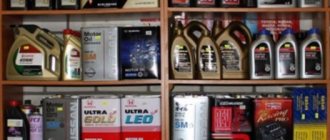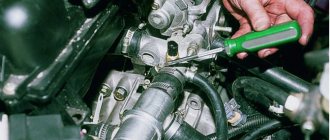The service life of an engine is usually understood as the number of operating hours that the engine can be guaranteed to operate. After such a motor life, the car owner invariably needs to carry out complex overhauls, carrying out a complete restoration of the engine. The engine life will depend on various factors, including the car’s driving style and regularity of service, as well as the type of engine. According to statistics, diesel engines have a longer service life, which is explained by the features of their design. However, the car owner needs to take into account the complexity of their maintenance.
How long does a diesel engine last on average?
It is believed that, in general, the service life of a diesel engine exceeds that of a gasoline engine by 2 or more times. After all, for the manufacture of a diesel engine, more durable materials are used that can withstand high temperatures - for example, cast iron instead of aluminum for the cylinder block. In addition, a special feature of the diesel engine is that high torque is achieved at low crankshaft speeds, which ensures less wear on parts.
But such comparisons in favor of diesel engines are correct only for heavy trucks. As for modern diesel engines with a volume of 1.9-2.2 liters in passenger cars, their maintenance-free life is about 300-350 thousand km. mileage This is comparable to the service life of gasoline engines.
The complexity of the fuel equipment of diesel internal combustion engines also directly affects their service life. Moreover, in difficult cases, restoring the normal operation of the fuel injection pump, injectors and plunger pair can cost more than overhauling a gasoline engine.
It is clear that the resource of a diesel engine declared by the manufacturer is designed for its operation in optimal conditions. And the specific mileage at which serious problems will appear is determined by two important factors.
Diesel engine life
There is an opinion among car owners that in terms of reliability and service life, diesel engines are twice as good as gasoline engines. Indeed, such motors are made from more durable alloys, they are more durable and can run for 500,000 without major repairs. However, you need to understand that they will not have a twofold increase in engine life, especially since the absence of breakdowns in a diesel engine will depend on various factors. On average, such an engine runs about 300 thousand kilometers before repair, after which it requires a complete restoration. Whereas gasoline engines usually require repairs at a mileage of about 200 thousand.
Design Features
The specifics of design solutions are directly related to the service life of the diesel engine. So, the larger the engine volume , the greater its safety margin, while small cars running on diesel engines have a noticeably shorter lifespan before overhaul.
Another important point is whether the engine is equipped with turbocharging . The latter increases torque and power, but also reduces the engine life of the internal combustion engine. But there are legends about longevity - it is known that they “run” for a million kilometers without serious interventions.
Do million-dollar engines exist now? Where did this legend come from?
Perhaps the legends about million-dollar engines emerged from stories that were told by car drivers 17-20 years ago. They talked about the cars of German taxi drivers, which had traveled more than 1,000,000 kilometers and were in working condition. Currently, passenger cars do not have such a resource.
Currently, million-dollar engines can be found on trucks. Diesel power units with a displacement of more than 10 liters often overcome the 1,000,000 kilometer mark without serious intervention in the internal combustion engine.
Question answer
Why can’t you put modern oil into an old engine?
Features of operation
Poor fuel and low-quality lubrication, engine operation under extreme loads and in difficult climatic conditions leads to disruptions in the operation of fuel equipment and deposits of carbon deposits on the walls of the engine, pistons and valves burn out, and the life of the internal combustion engine is reduced by 2-3 times.
The combustion chamber of a diesel internal combustion engine wears out greatly as a result of violations of the temperature regime of the engine. High pressure, friction and extreme temperatures without rapid cooling of parts lead to the destruction of cylinders, wear of timing valves and the need for serious repairs.
How long does a turbocharged engine last in Russian conditions?
In our climate, turbines in passenger cars operate for approximately 80,000 - 100,000 kilometers, depending on the load and driving style. Their service life is affected by almost the same factors as the engine - the quality of lubricants, operating conditions. Under particular intense loads, sudden starts at traffic lights, rash overtaking with sudden braking, the service life of the turbine is reduced. It must be remembered that after driving the turbine must be cooled. To do this, before turning off the engine in the parking lot, you need to let it run for about a minute at idle speed.
Question answer
What is torque and why is it more important than horsepower?
Replacing consumable parts
Filters, spark plugs and other consumable parts must be replaced in a timely manner to eliminate the possibility of reducing engine life.
Turbo engines and naturally aspirated internal combustion engines require a constant flow of air, which is part of the fuel-air mixture. Such air must be clean and free of any debris, which is ensured by an air filter, the replacement of which is regulated. Although the peculiarities of car operation make their own adjustments. Mostly the filter is replaced every 10 thousand km.
The next important “consumable” is spark plugs. They must not only be checked and changed on time, but also chosen correctly. Spark plugs must match the specific internal combustion engine. If this is not the case, the resource of the unit will suffer due to impaired sparking.
The engine life is comparable to how human life is maintained. Both the first and second need nutrients and clean air. Only in this case can we hope for a long life of functioning of a living organism and a mechanical device in the form of an internal combustion engine.
Durability of Renault engines
When choosing cars from this manufacturer, the deciding factor for many buyers is their durability. According to European car owners, the service life of the Renault engine is about 750,000 km. This figure is the highest among all B-class sedans. Naturally, this figure is only relevant when the car is properly cared for. With proper care, this figure may increase.
If this is a new car, it is important to break it in properly. Also, you should not drive on bad roads, where the engine will work at its limit. Do not overheat it or spin it too much. It is also important to change the timing belt on time - a lot depends on it.
The manufacturer recommends checking the belt every 15 thousand kilometers.
If all the rules for using the units are observed, their service life is quite high and can give a head start to older foreign cars.
Difference in service life of diesel and gasoline engines
Initially, a diesel engine implies greater power and loads, which must certainly be supported by an increased service life of the power plant. Many diesel engines still power many modern gasoline-powered units. However, this does not always happen, since there are a lot of manufacturers of both diesel and gasoline engines. After all, if you compare an expensive gasoline engine made in Japan with a Chinese analogue of the famous diesel engine, then, of course, this “fight” will be far from being in favor of the diesel engine. However, the diesel engine is considered to be one of the most durable.
The main secret of any diesel engine can be considered the cylinder block. First of all, they are made of special cast iron, which has a high margin of safety and great resistance to wide temperature changes. Modern gasoline engines are made of aluminum to reduce weight, but at high speeds such an engine overheats, which leads to natural deformation of the cylinders,
In addition, this applies not only to the block. After all, all parts of a diesel engine are made of cast iron , which fundamentally explains its durable and reliable operation.
The last difference can be called the number of revolutions. After all, a gasoline engine runs one and a half times faster, which accelerates the wear of the piston group, and, consequently, leads to wear of the entire engine as a whole. Diesel engines have only 2000 operating revolutions per minute, which means a small piston stroke and slower wear.
Instructions for using the additive
The instructions themselves do not look complicated. I just opened the bottle and poured it in. But before that, the internal combustion engine must be prepared.
- It is better to change the oil and filter, since the composition is not intended to increase the service life of the lubricant in the engine. And if you replace the old oil on time, you will drain the additive, thereby throwing money down the drain.
- Before filling, warm up the engine to operating temperature and turn it off. In a warm engine, the additive will mix better and faster with the oil.
- Pour the contents of the bottle into the oil filler neck.
- Start it and let it idle for 10-15 minutes.
Here are all the instructions. I will note one nuance that I read on the forum in correspondence with a representative of VMPAUTO.
The question was : Is it possible to pour the additive in -30 frost or is it better to wait?
The answer sounded something like this : You can fill in the additive at any time, but it is best to do this before frost.
What is inside?
In terms of design and functionality, the salon does not stand out from other “Japanese” ones. Everything is standard and convenient. At the same time, there are complaints about the finishing. Plastic is sensitive to mechanical stress. After just a couple of months it looks scratched and worn, which is noticeable, especially in bright sunshine.
A typical problem with the Prado 150 is the “weak” handles of the climate control unit. Particular care should be taken with the right “twist” - the passenger area. It is hollow inside, and the stopper is weak and when pressed hard, the button is easily recessed. You can’t buy the handle separately – just the whole unit assembled. Fortunately, if you have time and desire, you can fix it yourself by disassembling the block and putting the broken cylinder in its place using glue.
If we talk about the seats and steering wheel, the equipment is important here. After more than 100 thousand kilometers of mileage, only premium leather will look beautiful. And the upholstery of the seats, steering wheel, as well as the silver plastic inserts on the steering wheel and gearbox handle noticeably wear out after 30 thousand km. This will inevitably be misleading when assessing mileage based on indirect evidence, but until the 2nd restyling in 2022, mileage is not duplicated in any of the ECU units.
Steering wheel after 50,000 km. In most cars, by 100,000 km the steering wheel has already been reupholstered with new materials. Driver's seat. 160,000 km
In terms of electrical and electronics, Prado is a typical native of the land of the rising sun. That is, there are almost no problems, nothing breaks or burns without malicious intent. However, with long-term use, “even an old woman can get ruined.” There are known cases of replacing the steering column cable accompanied by the failure of the buttons on the steering wheel and the display of errors on the SRS unit. The price of the original cable starts from 18 thousand rubles, the Chinese analogue will cost 10-12 times cheaper.
Creaks in the Toyota interior are already commonplace. “Music” in the cabin is usually created by explosive plastic on the center console or at the bottom right of the windshield. To drive it away, you need to glue the plastic lining on the outside.
Sometimes the trunk door locks or the travel limiter are weak. The problem is solved by regular lubrication:
R9M Engine Characteristics
R9M engine
Technical characteristics of the R9M engine:
- exact volume – 1598 cubic meters. cm;
- power (hp) – from 130 to 180;
- torque (N/m) – 320 (maximum value);
- compression ratio - 15.4;
- fuel used – diesel;
- environmental class – Euro-5;
- food – direct injection “Direct Injection”;
- cast iron cylinder block;
- number of cylinders – 4;
- valves per cylinder – 4;
- piston stroke – 79.5 mm;
- Timing (chain) – DOHC type;
- permissible oil consumption – up to 500 g. per 1000 km;
- lubricant change frequency - every 15,000 km (in harsh conditions - after 7-8 thousand);
R9M engine under the hood of Nissan Qashqai
Fuel consumption
Diesel consumption by a Nissan X-Trail T32 (third generation) with a 6-speed manual transmission, all-wheel drive and 1.6 R9M engine:
- in city mode - 6.2 liters per 100 km;
- in “highway” mode – 4.8 liters per hundred;
- mixed cycle - 5.3 l.
Nissan X-Trail T32
Fuel consumption on the Qashqai j11 crossover with similar units:
- in the city - 5.6 l;
- on the highway - 4.5 l;
- mixed version - 4.9 l.
Diesel fuel consumption on a first-generation all-wheel drive Qashqai with a 6-speed manual:
- in “city” mode – 6.1 l;
- in “out of town” mode (on the highway) – 4.6 l;
- mixed cycle - 5.1 l.
Nissan Qashqai J11 before update on top, updated on bottom
Power plant operating mode
When choosing a diesel power plant, it is necessary to determine in advance the needs that the diesel power plant must meet, so that in the future you do not have to regret the wrong choice or wasted money. The diesel generator engine should be selected in accordance with the operating mode of the power plant.
| Main power supply | Backup power supply |
| Continuous use of a diesel power plant if there is no other permanent source of power supply | The power plant is used only during outages of stationary power supply, for example when electrical networks are damaged or overloaded. |
| Choose an engine that can operate without interruption for a long time | Choose a motor that can instantly accept 100% of the load at once |
How to increase the resource of an internal combustion engine
As you may have guessed, the service life of the engine depends not only on the material of its manufacture and technical projection characteristics, but also on the driver himself, or more precisely, on the correct maintenance of the power plant.
First of all, the driver must use for lubrication only high-quality oil that has passed special testing and is approved for use on a given type of engine. After all, the lubrication system is the “blood” of any engine and its life depends on its contents.
Oil for a diesel engine must be selected taking into account the applied loads. If you intend to use the engine in conditions close to extreme, it is recommended to fill only with oil with a high viscosity coefficient to avoid its dilution when the temperature rises. The type and brand of oil can also be found out by reading the technical data sheet for the power unit. It indicates all the characteristics of oils used on the engine under various conditions.
Experienced drivers know that a diesel engine is very sensitive to sudden increases in temperature. This phenomenon has a more serious impact than the quality of the oil being poured. To avoid overheating and increase engine power, you can install a turbo compressor connected to an intercooler, which will help maintain the engine at the temperature it needs.
That's probably all you need to know about the service life of a diesel engine. As you can see, the price to pay for a powerful and reliable motor is considerable, because you will have to stock up in advance on expensive spare parts and automotive chemicals that can save you from unnecessary expenses and preserve the life of the motor, even if quite large dust particles have flown into it.
Afterburning catalysts, expensive particulate filters, valves will “live” longer!
Thanks to the combustion catalyst, there are fewer impurities in the exhaust gases. Therefore, the load on the particulate filter and afterburning catalyst drops sharply.
Interestingly, afterburning catalysts are able to restore their performance: reducing agents formed during combustion of fuel in the additive clean their surface.
During a flash and high-temperature combustion of the air-fuel mixture, the additive cleans the cylinders and exhaust tract, in particular the particulate filter, from soot. Deposits are also removed from the pistons.
More information about the positive effect that FuelEXx has on the life of the particulate filter and catalyst can be found here https://www.rvsmaster.ru/Blog/sazha-sazhevyj-filtr-i-katalizator.





